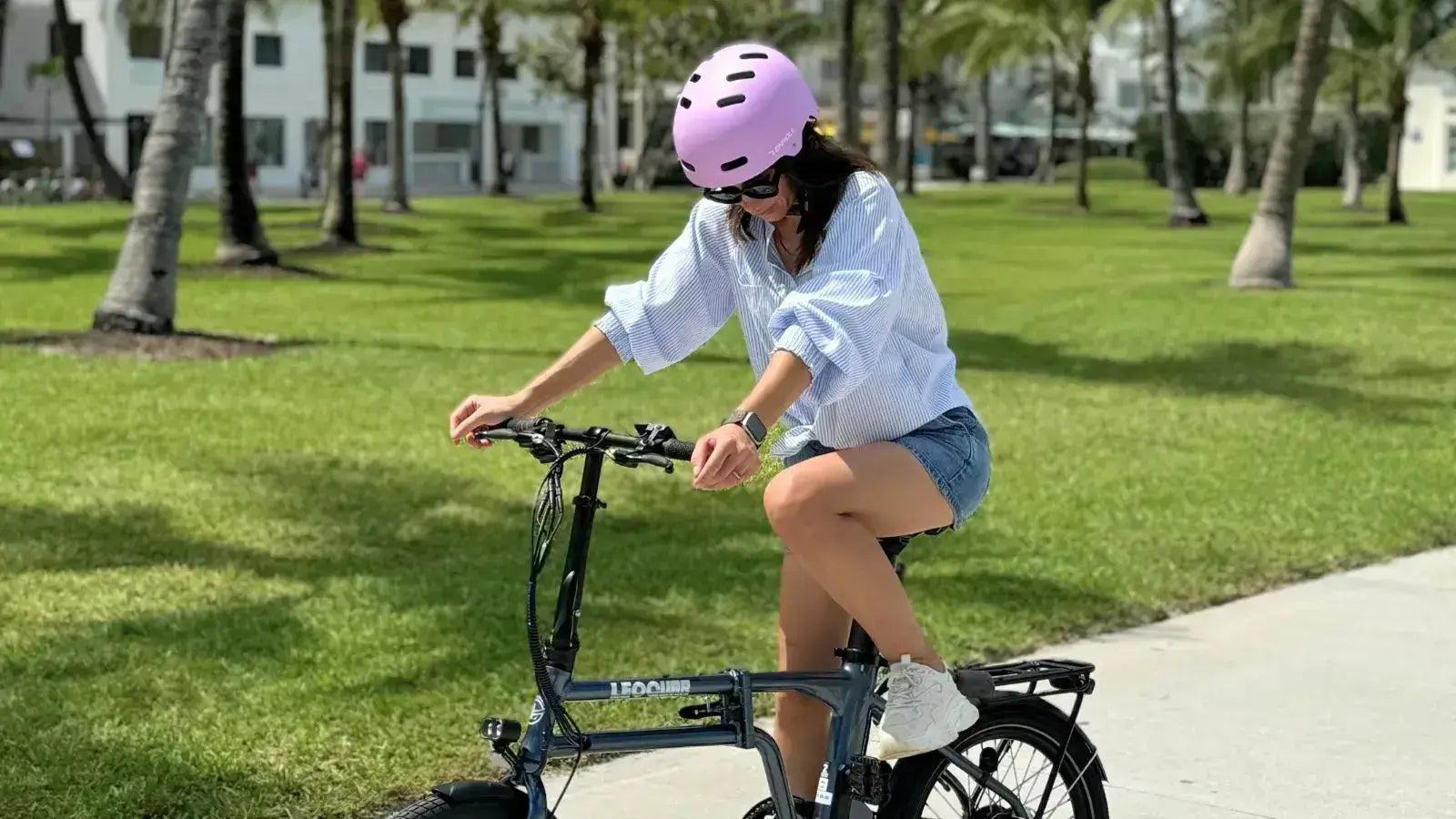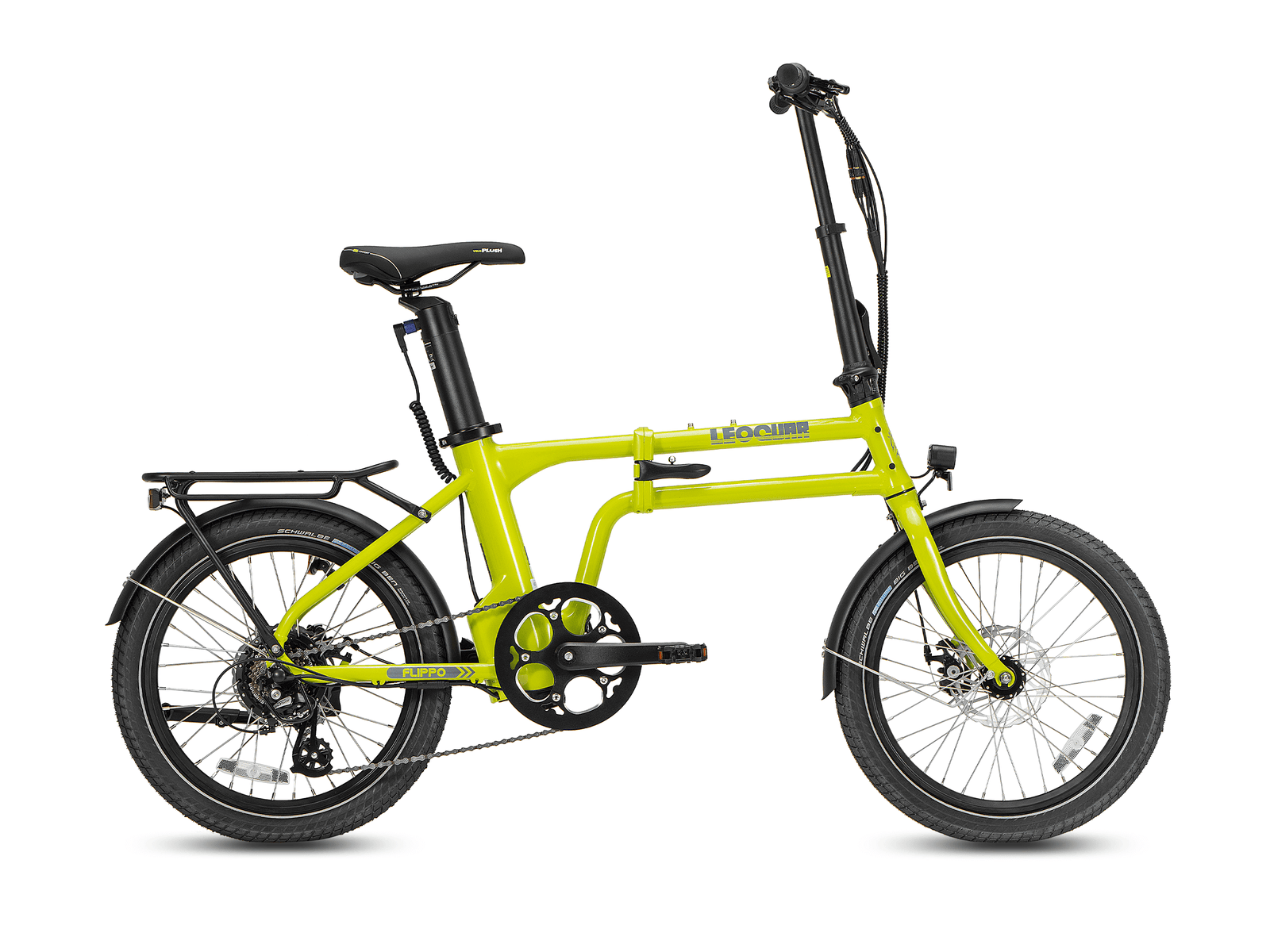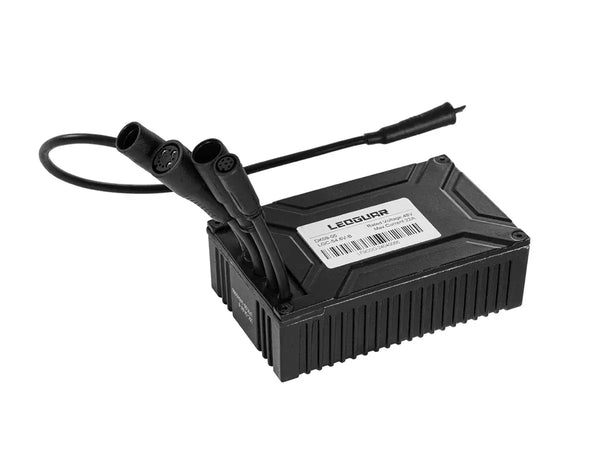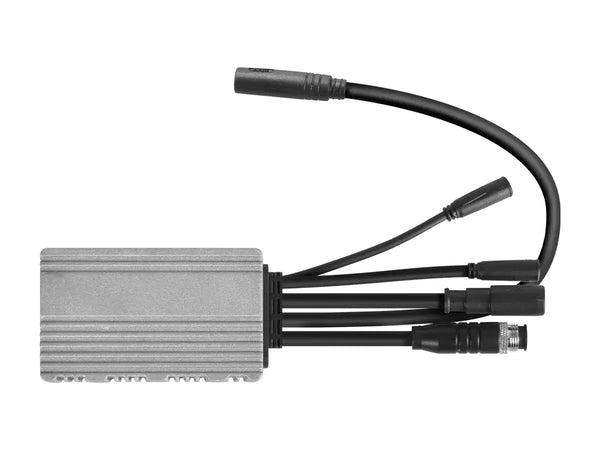
What to Check Before Buying a 48V Brushless Controller for Your E Bike?
Getting Started with Your Controller Choice
Picking a new 48v brushless controller can feel scary. This small metal box controls your e-bike and decides how it speeds up and how quiet it runs. Getting this choice right matters a lot for how well your bike works, how safe it is, and how long it lasts.
This guide will help you make the right choice. We made it to help you avoid mistakes that cost money and time. We will show you the important things to think about so your new controller works great with your bike and how you like to ride. We'll talk about these topics:
- Core Power Specs (Voltage, Amperage, Wattage)
- Controller Type (Sinewave vs. Square Wave)
- System-Wide Component Compatibility
- Physical Fit and Connectors
- Advanced Features and Programmability
Matching The "Big Three"
Getting these three specs right is the most important step when picking a 48v brushless controller. They form the base of your bike electrical system and you can't ignore them. A mistake here can make your bike work poorly, stop your controller from turning on, or break parts forever.
Voltage (V): The Rule You Can't Break
You must follow the voltage rule exactly. A controller marked as 48V only works with a 48V battery. You have to match your controller's voltage to your battery's voltage.
If you try to use a 48v brushless controller with a 36V battery, the controller will probably not turn on because of its safety features. It's even worse to connect a 52V or 60V battery to a regular 48V controller because this will almost always break the inside parts like capacitors and MOSFETs.
The only time this doesn't apply is when the controller clearly says it works with different voltages (like 36V-52V). You should know what "48V" really means in practice. A full 48V lithium battery actually shows about 54.6V on a meter. The controller can handle this high voltage. It also has a Low Voltage Cutoff (LVC) that usually kicks in between 39V and 42V. This safety feature turns off power to the motor when your battery gets low, which keeps your expensive battery from getting damaged.
Amperage (A): Your Power Key
Amperage, or Amps (A), measures how much electrical current flows from the battery to the motor through the controller. This spec affects real-world performance more than anything else. Higher amperage gives you more torque for faster acceleration and better hill climbing.
When you look at controller specs, you'll see a current rating like "25A". This usually means the highest continuous current the controller can safely give without getting too hot. Some also show a peak current that works for short bursts. The basic rule is to match the controller's amperage to your motor and battery. Your motor can only handle so much current before it gets too hot and risks burning its inside parts.
Your Battery Management System (BMS) also has a maximum current output. Your controller's max amp rating should be less than or equal to both your motor's rating and your battery's BMS rating. Picking a controller with too many amps for a small motor will cause problems. On the other hand, a low-amp controller on a powerful motor will make your ride feel weak.
Wattage (W): The Power Result
Wattage (W) gives you a general idea of how much power a controller puts out. You calculate it by multiplying Voltage by Amperage (V x A = W).
For example, a 48V controller with a 25A rating could be called a 1200W controller (48V * 25A = 1200W).
While labels like "1000W controller" or "1500W controller" are common and helpful, the amperage rating tells you more about performance. When you compare two 48V controllers, the one with higher amperage will give more torque and feel more powerful, if your motor and battery can handle it.
| Specification | What It Controls | The Rule of Thumb |
|---|---|---|
| Voltage (48V) | Top Speed & System Compatibility | Must Match your battery's nominal voltage. |
| Amperage (e.g., 25A) | Acceleration & Torque | Must Be Compatible with your motor's and battery's limits. |
| Wattage (e.g., 1200W) | Overall Power Output | A general guideline; Amperage is more important for performance feel. |
Sinewave vs. Square Wave
Besides pure power, the controller type decides how your ride feels. The two main types are square wave and sinewave. Your choice depends on what matters more to you: raw power feel or smooth, quiet operation. The controller sends electrical pulses to the motor to make it spin. The "wave" describes the shape of these electrical pulses.
Square Wave Controllers
Think of a square wave controller as a simple on/off switch. It sends power in choppy, sudden steps.
- Pros: They cost less money and give a very "punchy" or strong feel right from a stop. This aggressive power delivery works great for riders who want maximum grunt.
- Cons: The main problem is noise. Square wave controllers make a clear, loud hum or buzz from the motor, especially when working hard. They also use more power than sinewave controllers, which can reduce your e-bike's total range a little. The power delivery can sometimes feel jerky or less smooth.
- Best for: Riders building high-power off-road bikes, people on tight budgets, or anyone who wants that raw, instant torque and doesn't mind the motor noise.
Sinewave (FOC) Controllers
Think of a sinewave controller as a smooth dimmer switch. It sends power in a clean, steady, and rounded waveform. Many use a smart system called Field-Oriented Control (FOC) to do this.
- Pros: The biggest benefit is that they run almost silently. The motor hum from square wave models disappears completely. Power delivery feels incredibly smooth, predictable, and refined. This efficiency can also give you 5-10% more range from the same battery.
- Cons: Sinewave controllers usually cost more money. To some riders, the smooth power can feel slightly less "raw" or aggressive when starting compared to a square wave controller with the same power rating.
- Best for: Most riders, especially people who commute, tour, and anyone who wants a quiet, sophisticated, and smooth ride. The difference in ride quality is big and worth the extra cost for most people.
The Compatibility Checklist
We've seen many DIY builds and upgrades get delayed for weeks because of a simple mistake: the new 48v brushless controller has the wrong plug for the display. The controller connects to every other electronic part on your bike and must be able to talk to them. Let's make sure this doesn't happen to you. Before you click "buy," go through this system-wide checklist.
Your Pre-Purchase Checklist
Display: This causes the most problems. Controllers and displays talk using specific protocols, usually UART or CAN bus System. They don't work with each other across different systems. You can't use a Bafang display with a KT controller, for example. Even if the protocol is the same, the connector plug (number of pins, shape, and wire order) must match exactly. Your best choice is to buy a controller and display together as a matched set, or make sure the new controller comes from the same brand and series as your current display.
Throttle: Most e-bike throttles use a 3-wire Hall sensor system (+5V, Ground, Signal). While this is standard, the connector type is not. Check if your throttle uses a 3-pin JST-SM, a waterproof Higo/Julet connector, or another special plug. You may need to buy an adapter or be ready to splice wires if they don't match.
Brake Levers: If your bike has motor cutoff e-brakes (a safety feature that cuts motor power when you brake), the sensors in the levers must connect to the controller. Again, check the number of pins and connector type. Some are simple 2-pin connectors, while others are built into larger multi-pin plugs.
Pedal Assist Sensor (PAS): The PAS tells the controller when you're pedaling. The sensor and controller must work together. Check the connector type and number of wires. A mismatch here means your pedal assist won't work, forcing you to use only the throttle.
Motor Connectors: The three thick phase wires from the motor must connect to the controller. These are usually simple bullet connectors and are easy to match. More importantly, you must check the Hall sensor connector. This is a smaller plug with at least five thin wires that tells the controller where the motor is positioned. Make sure the plug on the new controller matches the one from your motor. While most modern controllers can auto-detect the motor's phase angle (60 or 120 degrees), a mismatched Hall sensor plug will stop your project.
Physical Size: This seems obvious, but people forget about it easily. Will the new controller physically fit where the old one was? Many e-bikes have special controller spaces inside the frame or in a mounting box. Measure the size of the potential new controller and compare it to your available space.
Advanced Features and Programmability
Not all 48v brushless controllers are the same. While basic models do the job, more advanced units offer customization and features that can change your riding experience completely. Whether you need these extras depends on how comfortable you are with technology and what you want from your bike.
Programmable Controllers
A programmable controller lets you connect it to a PC or smartphone app (usually through a USB cable or Bluetooth) to fine-tune how it performs. This is for people who want total control. Common settings you can adjust include:
- Amperage: You can set the maximum battery and phase amps to perfectly match your motor's limits or to dial in exactly how much torque you want.
- Throttle Response: You can change the throttle curve to be more gentle and gradual or more aggressive and responsive.
- Low Voltage Cutoff (LVC): You can adjust the LVC to match your specific battery's characteristics.
- Regenerative Braking: You can turn on and adjust how strong the regenerative braking effect is.
Brands like VESC, Fardriver, Grin Technologies (Cycle Analyst), and ASI are well-known for high-performance controllers that you can program extensively. These offer much more tuning than a standard plug-and-play unit but require you to be willing to learn and experiment.
Key Features to Look For
Even on controllers you can't program, certain built-in features can be very useful:
- Regenerative Braking: This feature uses the motor as a generator when you brake or coast downhill, sending a small amount of charge back into the battery. While it won't dramatically increase your range, it's great for reducing wear on your mechanical brake pads, especially on long downhills.
- Three-Speed Switch: Many controllers have a wire or function that lets you connect a simple three-position switch. This lets you switch on-the-fly between pre-set power levels, like an "Eco" mode (low amps), a "Normal" mode, and a "Sport" mode (full amps).
- Cruise Control: A simple feature that lets you hold your speed without keeping the throttle pressed, which is great for long, flat stretches.
- Thermal Rollback: This is a crucial safety feature on higher-power controllers.
A sensor watches the controller's temperature and will automatically and gradually reduce power if it starts to overheat, preventing total failure and protecting your investment.

Making Your Final Choice
Picking the right 48v brushless controller is an investment in your e-bike's main functionality. By looking beyond just the wattage label and considering everything, you can make sure your upgrade or build succeeds. Go through your steps again. First, confirm the "Big Three": your controller's voltage must match your battery, and its amperage must work with both your battery and motor.
Second, choose your ride's personality: a smooth and silent sinewave for refined riding or a punchy and raw square wave for maximum torque feel. Third, carefully work through the compatibility checklist, confirming that the plugs for your display, throttle, brakes, and sensors match perfectly.
Finally, decide if you want the added control of a programmable unit or the convenience of a plug-and-play model with the right features. By following this expert guide, you're not just buying a part; you are making an informed engineering choice that will define your smart e-bike performance, reliability, and riding enjoyment for years to come.
Frequently Asked Questions
1. Q: Can I use a 52V battery with a 48V controller?
A: Generally no, unless the controller specifically states it supports a wider voltage range like 36V-52V. Using a 52V battery with a standard 48V controller will likely damage the internal components and void your warranty.
2. Q: What's the difference between continuous and peak amperage ratings?
A: Continuous amperage is what the controller can safely provide indefinitely without overheating. Peak amperage is what it can deliver for short bursts, usually lasting only a few seconds. Focus on the continuous rating for everyday performance.
3. Q: Do I need a programmable controller for my first e-bike build?
A: No, most riders do well with plug-and-play controllers that have good default settings. Programmable controllers are better for experienced builders who want to fine-tune their bike's performance or have specific requirements.
4. Q: How do I know if my motor and controller are compatible?
A: Check three things: voltage must match exactly, the controller's amperage should not exceed your motor's rating, and the Hall sensor connector must fit. Most modern brushless motors work with most brushless controllers if these requirements are met.
5. Q: Why is my new controller making noise when the old one was quiet?
A: You likely switched from a sinewave controller to a square wave controller. Square wave controllers naturally produce more motor noise due to their electrical output pattern. This is normal operation, not a defect.










































Leave a comment